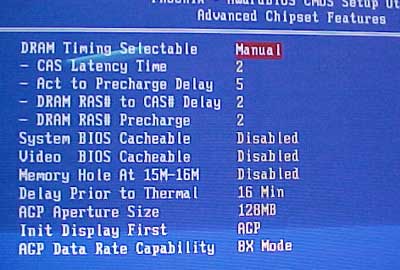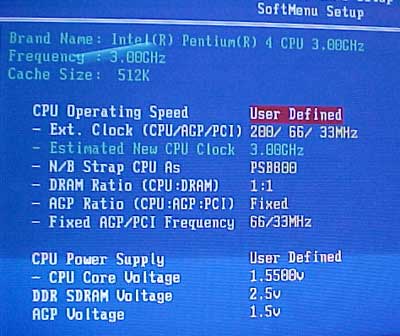
|
Who could forget great motherboards like the BH6, BE6-II and BX-133? How about the more recent TH7II, BD7 or ABIT IT7 MAX2 Rev2 for the Pentium 4 processor?
84% Rating: 
|
|
|
|
Home >
Reviews >
Motherboards >
ABIT IS7-G |
|
|
Overclocking and BIOS
We've had quite a bit of luck in
the past overclocking Abit motherboards and I was hoping that the IS7-G would be
good to us as well. The FSB was raised slowly at first, but at 217 MHz FSB we ran into a few
stability problems. Raising the VCore to 1.6V fixed those problems so we started
to push the board again.
At 225 MHz FSB we ran into a
few weird problems. First we had to up the CPU voltage to 1.7V to help
stabilize things and we had to enable the 5:4 memory divider to keep the board from
crashing back to desktop in 3DMark2001. This is a bid odd as we have gotten Corsair's
XMS3500 CAS2 DIMM's well past 230 MHz FSB on other motherboards.
In the end we were able to push the Abit IS7-G
to 237 MHz FSB while maintaining 100% stability. Not bad considering we're using
an air cooled P4 3.0C processor, if we had a 2.4C I'm pretty sure 270 MHz+ FSB
would have been attainable for this motherboard.
The awesome Abit
BIOS:

Abit gives the end user the usual
memory timing tweaks such as CAS Latency, RAS to CAS and RAS Precharge. We're
also able to change the AGP rate as well as the AGP aperture
Size.

Overclockers are no doubt familiar
with Abit's Soft Menu options (Abit no longer calls this Soft Menu III). Maximum
FSB is 412 MHz
in 1 MHz increments. As with most other Pentium 4 motherboards on the market,
we're also able to lock in the AGP/PCI frequency. The BIOS allows the end user to
raise the CPU voltage to 1.85V which is very nice.
However, DDR
voltage max's out at a lowly 2.8V. The more hardcore overclockers out there will
probably have to mod the motherboard for higher memory voltages.
|
